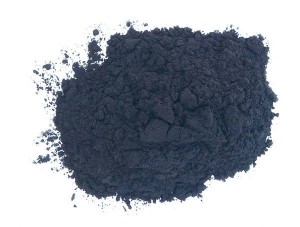 |
| charcoalremedies.com |
Charcoal is an adsorbent and it will adsorb and condense many times its own volume of various gases. It is very useful as an antiseptic due to its adsorbent and oxidizing qualities. It is excellent taken internally for acid dyspepsia and also for gas, fermentation, and heartburn.
Dosage
One heaping teaspoonful after each meal. Put the charcoal powder in a cup, add water enough to make a paste, dilute, and drink at once. More can be taken with benefit.
Charcoal is a valuable remedy in cases of colic due to decomposition of foods in the stomach and bowel, and can be used as either a preventive or curative. Give a tablespoonful in half-a-glass of hot water. As a preventive, take a tablespoonful after each meal in a little hot water.
For inflammation of the bowels or dysentery, give a tablespoonful in half-a-glass of hot water and repeat as often as necessary. Also give charcoal poultices over the bowels and stomach.
Charcoal mixed in a strong smartweed tea makes an excellent poultice for bruises and inflammation.
A charcoal poultice is good for relief of inflammation in the eyes. It is also a most excellent poultice for gangrene, old ulcers, and sores.
I have used charcoal and olive mixed to the consistency of paste, or so that it is easy to take. It is very good for some kinds of indigestion. Charcoal also mixes easily with soybean milk, and may be taken in this way for indigestion.
Old charcoal is made more effective if heated before using.
Charcoal is truly a universal antidote. No home should be without charcoal and the knowledge of how to use it effectively. It is a marvelous antidote for many kinds of poisons and is excellent to use for infections. Charcoal is also an excellent air deodorizer when placed in a dish in the refrigerator or anywhere that unpleasant odors are present. It may be used either internally or externally. Charcoal has been found to be harmless when ingested or when used on the skin and may be applied in powdered form directly to skin ulcers or wounds, specially if they are infected.
For a long time there has been some difference of opinion as to whether or not charcoal will adsorb necessary nutrients as well as poisons. Dr. Holt states: “It is now very clear that activated charcoal will adsorb not only poisons but also vitamins, digestive enzymes, amino acids, and other valuable nutrients from the gut. Such losses if continued will seriously affect health, but are of no importance in situations of acute poisoning.”
Poultices made of charcoal are excellent for insect bites, stings, poison oak, inflammation around the ears and eyes, to dress and disinfect wounds, cellulitis, boils, carbuncles, and abdominal pain. They also act as a deodorant and antiseptic.
What is Activated Charcoal?
 |
| herbsandoilsworld.com |
Activated charcoal is well known as a antidote as it adsorbs most organic toxins, chemicals and poisons before they can harm the body. Some Emergency Rooms administer large doses of activated charcoal for certain types of poisoning.
Where to Get Activated Charcoal
I keep this brand of activated charcoal on hand because it is made from coconut shells and is the most pure source I’ve personally found. I store in a glass jar and usually keep it on the bathroom sink since we typically just use it for teeth. Fair warning: activated charcoal is EXTREMELY messy if spilled. It will easily wash out of a sink or bathroom counter but isn’t so easy to get out of rough surfaces like tile grout (don’t ask how I know). I recommend keeping this out of the reach of children or messy pets for that reason!
Activated charcoal is also use in the carbon block filters on our water filter as it can pull toxins from the water as well.
How to Use Activated Charcoal?
I most regularly use charcoal to brush my teeth as it whitens them naturally. I keep it on hand in case any of the kids ever ingest any toxins or household chemicals, though we also do our best to keep anything toxic out of the house completely. In case of any emergency, I would absolutely call a poison control center (we keep the number with all emergency numbers on our fridge) and follow their directions, but this basic use guide is also helpful.
I have personally used charcoal to treat a spider bite on my son’s leg (we had confirmation that it was likely a brown recluse bite and a mix of charcoal and baking soda helped draw the toxin out and he healed with no long term scarring. I’ve also used it when I got food poisoning (another good reason not to eat out!) and was able to get rid of it within a few hours with charcoal followed by apple cider vinegar and then epsom salt (to avoid the charcoal building up in my system).
As with any substance, you should always check with a doctor or medical professional before use, especially in an emergency or life threatening situation or if there is any other underlying health problem.
Activated charcoal is not known to be toxic, though it should not be taken within two hours of vitamins or medications because it will keep the body from adsorbing them. Care should also be taken to find a high quality form of charcoal. I personally would not take charcoal on a regular basis and would only use as needed. This article has a full list of precautions.
Also, activated charcoal is NOT the same thing as the ashes from burning wood or other fires at home, so please don’t try to use those type of ashes for these or any other uses! Read more at wellnessmama.com









